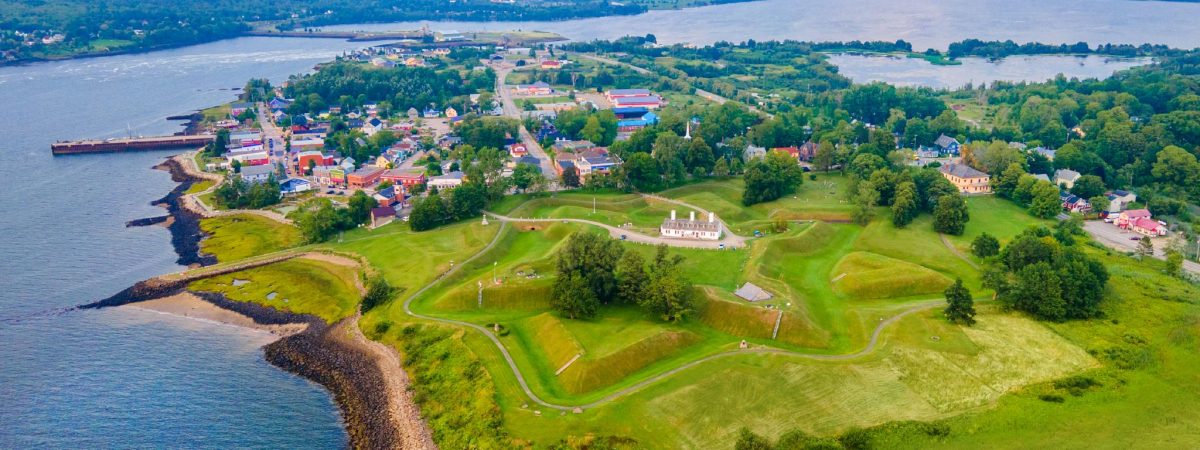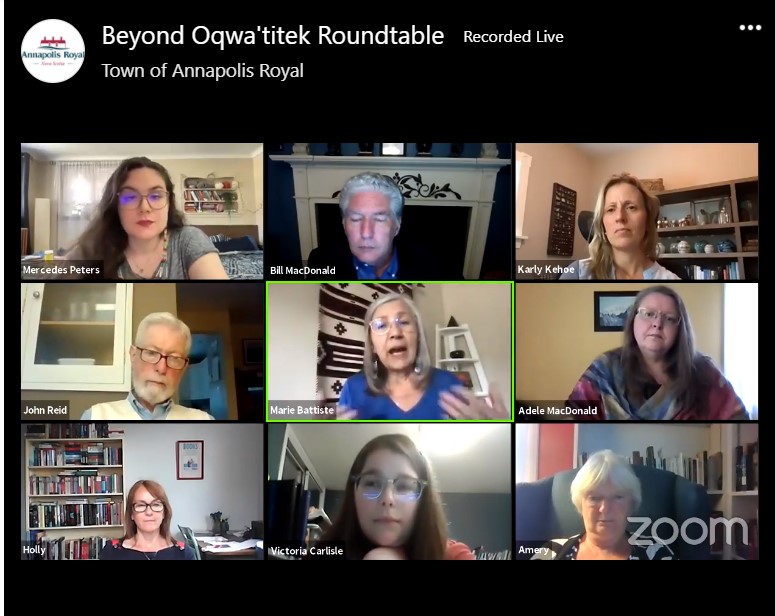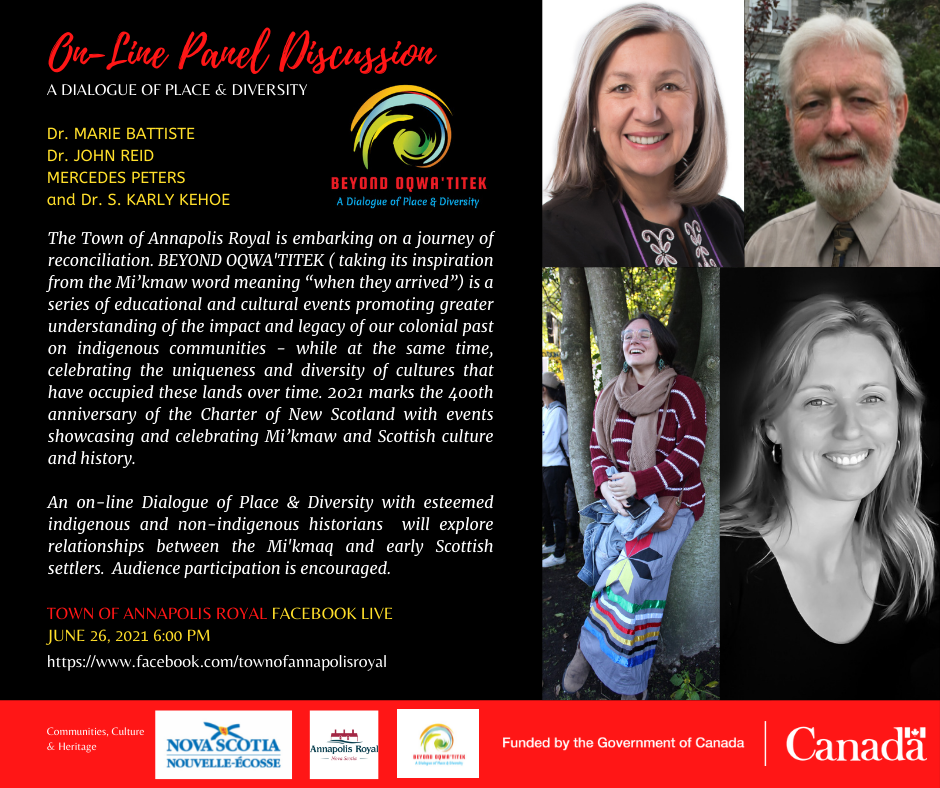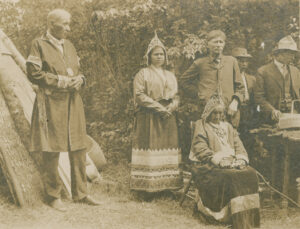Beyond Oqwa’titek
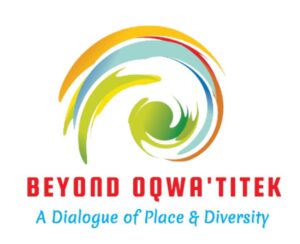
Join Us on a Journey of Reconciliation September 10th, 11th, and 12th in Annapolis Royal |
||||||||||||||||||||||||||||||||||||||||||||||||||||||||||||||||||||||||||||||||||||||||||||||||||||||||||||||||||||||||||||||||||||||||||||||||||||||
What is Beyond Oqwa’titek? Taking its inspiration from the Mi’kmaw word meaning ‘when they arrived’, Beyond Oqwa’titek, is a series of educational and cultural events that will mark Mi’kmaw and early Scottish contact, and the later arrival of the Gaels. As we acknowledge the 400th Anniversary of the Charter of Nova Scotia (New Scotland), we will be exploring our colonial past in the spirit of “A Dialogue of Place and Diversity.” We will reflect upon the impact and the legacy of colonialism particularly on Indigenous communities, as well as other early settler communities, and celebrate the uniqueness and diversity of the cultures of the peoples that have inhabited these lands over time.
Mion-aithriseachd a’ phrógraim, Bun is Bàrr an Albainn Nuaidh a bhios a’ ceangal nan ginealach ri a chéile gus cànan, cultur agus féin-aithne nan Gàidheal ath-aiseag.
|
||||||||||||||||||||||||||||||||||||||||||||||||||||||||||||||||||||||||||||||||||||||||||||||||||||||||||||||||||||||||||||||||||||||||||||||||||||||
February 22-26 |
||||||||||||||||||||||||||||||||||||||||||||||||||||||||||||||||||||||||||||||||||||||||||||||||||||||||||||||||||||||||||||||||||||||||||||||||||||||
Beginning slowly in 1621 and peaking from 1760 to 1860, many Scots immigrated to Nova Scotia- why? |
This video from the Wagmacook Culture and Heritage Centre helps us understand the culture of the Mi’kmaq when the Scots arrived and some of the lasting impacts of colonisation |
|||||||||||||||||||||||||||||||||||||||||||||||||||||||||||||||||||||||||||||||||||||||||||||||||||||||||||||||||||||||||||||||||||||||||||||||||||||
February 15-19
Decolonization Learning Journey – 4 webinars themed around the topic of Pre-Contact and Early History |
||
In response to the Truth and Reconciliation Commission’s Calls to Action, the Community Sector Council of Nova Scotia (CSCNS) in partnership with Unama’ki College of Cape Breton University, embarked on an organizational learning journey. At the completion of that program and through various initiatives since, the CSCNS is steadfast in its commitment to deepening a better understanding of the truth of Canada’s shared history with Indigenous peoples, and to taking a leadership role to co-create shared learning spaces across the province to create dialogue, education spaces, and meaningful movement toward reconciliation. |
||
DLJ 3 – Contact and Historical Conflicts, Treaties, and Significance of Indigenous People’s DayWITH STEPHEN AUGUSTINE Indigenous people have lived in North America since time immemorial. There is significant diversity between Indigenous nations. Before European arrival, neighbouring Indigenous nations engaged in treaty-making, formalizing and defining relationships. Political, military, or trade endeavours established alliances between nations; however, conflicts were not absent between these nations. During early exploration, Europeans claimed the rights of sovereignty, property, and trade in the regions that they seemingly “discovered.” Associate Vice President, Indigenous Affairs and Unama’ki College
|
|
DLJ 4 – Indian Reserves, the Indian Act, and ConfederationWITH CHERYL KNOCKWOOD Treaties are agreements made between two, or possibly even several nations or governments, and are meant to govern the relationship between parties. Between 1725 and 1762, the British Crown, the Mi’kmaq, and Wolastoqiyik (Maliseet) people signed a series of Treaties of Peace and Friendship. Within these treaties, L’nu and Wolastoqiyik did not give up the title and rights to their land, nor did they give up their status as sovereign nations. Governance Coordinator, Membertou Heritage Centre |
February 8-12
| Language Schools | ||
Dòchas means ‘Hope’ in Scottish GaelicGaels in Nova Scotia, Canada, struggle to maintain and pass on their Gaelic language, culture, and identity in the 21st century as they have been under threat for hundreds of years. |
Do You Speak My Language Mi’kmaw at First Nations School in Nova Scotia. A video by the Mi’kmaq Liaison Office at the Nova Scotia Department of Education. Students at We’koqma’q Mi’kmaq School in Nova Scotia realize the need to keep their language alive. |
|
Culture |
||
| Traditionally SCOTS officers and soldiers would gather this weekend for a Burns supper to celebrate the life and poetry of the National Bard, Robert Burns. | In honor of International Tartan Day we talk about the history and design of the Scottish Tartan. What is it and what is Plaid? Plus different Tartan Clans. | |
The Mi’kmaw Creation Story and Pre Contact Way of LifeWITH STEPHEN AUGUSTINE The L’nu or Mi’kmaw Creation Story describes the creation of the world. The Creation Story establishes the morals, principles, and values between the Mi’kmaq and their environment. L’nu people have always negotiated their survival through ceremonies and developed significant relationships with plants, animals, water, fire, and air. |
Netukulimk, Harvesting, Sustainable Ways of Living, and Seven Generations WITH CLIFFORD PAUL All activities between L’nu and the natural world are governed by netukulimk. Netukulimk is based in respect for the land, waters, plants, animals, and fish. There are laws of nature within netukulimk that dictate when it is appropriate to hunt, fish, or harvest. Netukulimk and Mi’kmaw natural law play a significant role in how L’nu approach sustainability. |





